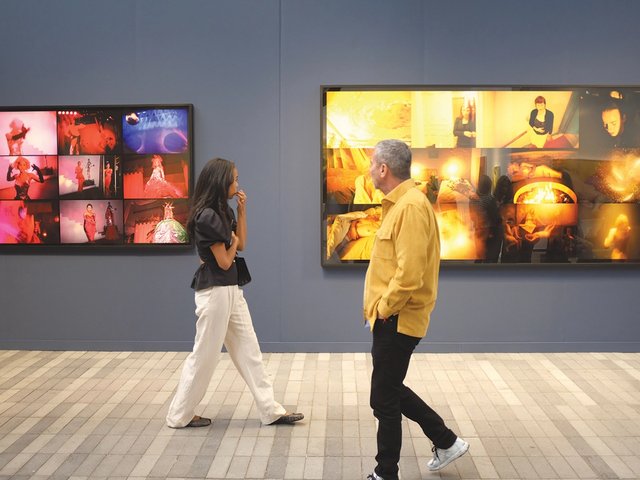London
Ten years after the hysteria of dotcom boom and bust, the web is finally finding its place in the art market with two US ventures turning to the internet to expand their businesses.
VIP Art Fair
A heavyweight pack of dealers are teaming up to launch a new online art fair (22-30 January). The elite group setting up “virtual booths” includes Gagosian, Sadie Coles, Emmanuel Perrotin and David Zwirner. “It’s invitation only,” said James Cohan, who created the concept-fair with his wife Jane Cohan and internet entrepreneurs Jonas and Alessandra Almgren.
Event-driven buying is a “phenomenon you can’t ignore, and we’re tapping into that”, said Cohan, who hopes that the week-long confluence of power-players will attract collectors happy not to fork out on the flights, hotels and hoopla typically associated with fairs. He said the potential pooled client-base might be upwards of 100,000. “This is a simple mechanism to help develop relationships,” said Cohan. He hopes that the low-cost opportunity to view a concentration of contemporary art will appeal to cash-strapped museum curators: “We see it as a real vehicle for institutions.” The overheads are lower for galleries, too—the largest booth costs $20,000, which organisers estimate to be around a fifth of the cost of a conventional fair.
Communication will be via instant messaging, phone or Skype. Potential buyers—who have to be invited by galleries, or pay a fee—have direct access to dealers: Cohan is advising gallerists to be active 18 hours a day—“that way New York can talk to Sydney.” Dealers can take clients into virtual private rooms if they want more discreet discussions.
The pan-and-zoom technology allows collectors to hone in on objects. They can compile lists of works and create personalised “tours”, which can be made public for others to share.
But will collectors really commit to buying big-ticket work without seeing it in the flesh? The lessons of the dotcom bubble showed that people were happy to spend online—if the prices were low. But, as Marc Payot, director of participating gallery Hauser & Wirth, said: “Ten years ago it would have been impossible to sell work online, and almost offensive to send an offer by email—now 99% of our offers are electronic.” He added: “Every market tries to find new possibilities to expand—who knows what will happen.”
Heritage Auctions
The internet has given 35-year old Heritage Auctions a powerful growth spurt over the past 15 years, according to the company. While rivals such as Sotheby’s spent huge sums investing in online business in around 2000—only to suffer major losses and make hasty retreats—Heritage quietly staged a boom, and will make a move on Manhattan this month with a new Park Avenue address.
The company first created an internet platform in 1995 that “allowed us to triple the number of clients almost overnight”, said Heritage president Greg Rohan. “Over the last ten years we’ve had an average annual growth rate of 10-15%. We grossed $650m last year, and now have 400 employees.”
Heritage started trading in rare coins, but has broadened its remit since the mid-1990s, and now sells across 30 categories including comics, vintage movie posters and fine and decorative arts. Average prices range from $5,000-$500,000 but go up to $5m. “Other companies have to focus on works between $5m-$50m, and the air is very thin at that level,” said Rohan.
The Heritage site attracts more daily visitors than Sotheby’s and Christie’s combined, according to Rohan who said the firm now has 525,000 members in 181 countries: “People want to do business in their own time zone.” Rohan says the website is “chock-full of information. It makes it very easy—anyone can access the complete catalogue, make the decision to buy, press the button and spend $1m without ever having to talk to us.” Rohan added: “Unlike the other auction houses we are completely transparent—if something has a reserve we tell you about it. People love that there are no games.”
Originally appeared in The Art Newspaper as ‘Fairs and auctions by mouse'


